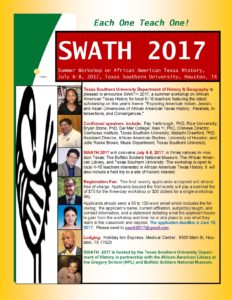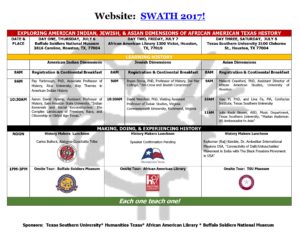How African Americans Use DNA Testing to Connect With Their Past
Genetic tests have ushered in a new era of root-seeking and community-building, says social scientist Alondra Nelson
Photo: Before genetic testing, the writer Alex Haley’s 1977 television miniseries “Roots” inspired many African Americans to start tracing their own ancestries.
(The Atlantic) In 1977, Alondra Nelson remembers lying stomach-down, head-in-hands, in front of the television, watching Alex Haley’s miniseries Roots with her parents. “I knew that something special was happening because my parents didn’t let us watch TV in the evenings, and here, they were letting us watch eight nights in a row,” she told a crowd at the Aspen Ideas Festival, which is co-hosted by the Aspen Institute and The Atlantic. “They wanted us to see it for its historic nature.”
The miniseries, which traced Haley’s genealogy back to the Gambia, spurred many African Americans to start tracing their own ancestries. And it inspired Nelson’s own interest in genealogy and the social consequences of learning about one’s roots. Now, as the dean of social science at Columbia University, Nelson has spent more than a decade studying what she describes as a “new groundswell of root-seeking”—one propelled by genetic testing.
Today, there are dozens of companies that will sequence segments of a customer’s DNA and tell them about their ancestry. When Nelson asked the audience how many had made use of such services, at least a dozen people raised their hands. But in 2002, the industry was a nascent one. To find its early customers, Nelson had to go to old-fashioned genealogy clubs and societies. (more)
“The Meaning of July Fourth for the Negro”
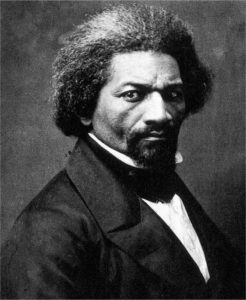 During the 1850s, Frederick Douglass typically spent about six months of the year traveling extensively, giving lectures. During one winter — the winter of 1855-1856 — he gave about 70 lectures during a tour that covered four to five thousand miles. And his speaking engagements did not halt at the end of a tour. From his home in Rochester, New York, he took part in local abolition-related events.
During the 1850s, Frederick Douglass typically spent about six months of the year traveling extensively, giving lectures. During one winter — the winter of 1855-1856 — he gave about 70 lectures during a tour that covered four to five thousand miles. And his speaking engagements did not halt at the end of a tour. From his home in Rochester, New York, he took part in local abolition-related events.
On July 5, 1852, Douglass gave a speech at an event commemorating the signing of the Declaration of Independence, held at Rochester’s Corinthian Hall. It was biting oratory, in which the speaker told his audience, “This Fourth of July is yours, not mine. You may rejoice, I must mourn.” And he asked them, “Do you mean, citizens, to mock me, by asking me to speak to-day?”
Within the now-famous address is what historian Philip S. Foner has called “probably the most moving passage in all of Douglass’ speeches.”
What, to the American slave, is your 4th of July? I answer; a day that reveals to him, more than all other days in the year, the gross injustice and cruelty to which he is the constant victim. To him, your celebration is a sham; your boasted liberty, an unholy license; your national greatness, swelling vanity; your sound of rejoicing are empty and heartless; your denunciation of tyrants brass fronted impudence; your shout of liberty and equality, hollow mockery; your prayers and hymns, your sermons and thanks-givings, with all your religious parade and solemnity, are to him, mere bombast, fraud, deception, impiety, and hypocrisy — a thin veil to cover up crimes which would disgrace a nation of savages. There is not a nation on the earth guilty of practices more shocking and bloody than are the people of the United States, at this very hour.
Read the entire speech here.
Descendants of the celebrated Wilson potters celebrate their history
 (San Antonio Express-News) Early Saturday morning, a procession of cars carrying members of the Wilson family wound along FM 466 through hardscrabble countryside to a small rural cemetery to honor ancestors who left a unique stamp upon Texas history.
(San Antonio Express-News) Early Saturday morning, a procession of cars carrying members of the Wilson family wound along FM 466 through hardscrabble countryside to a small rural cemetery to honor ancestors who left a unique stamp upon Texas history.
The visitors are descendants of late-19th-century potters Hiram, James and Wallace Wilson, who started the first recorded African-American business in Texas, in 1869, four years after they had been freed from slavery. The Wilson brothers had learned the pottery trade while they were slaves owned by Presbyterian minister John McKamey Wilson Jr., who had moved from North Carolina to Texas in 1857.
The brothers set up three pottery companies, which experts say were known for high-quality pieces that are highly collectible today, some fetching thousands of dollars. The last company closed in the early 1900s, but its legend lives on.
“Over the years, the legacy was woven into the society of Seguin,” said Joseph Reid, 76, interim president of the Descendants of Hiram, James and Wallace Wilson Historical Foundation. “We’re so proud of the Wilson story.” (more)
Izola Fedford Collins, 1929-2017: Distinguished PV alum, musician, author passes
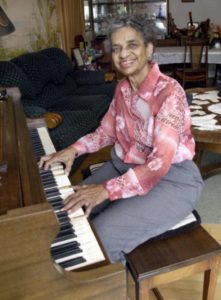 (Houston Chronicle) Izola Ethel Fedford Collins, a musician and educator who wrote a published history of Juneteenth, “Island of Color,” died (Monday, June 12) at Jennie Sealy Hospital in Galveston of heart failure. She was 87.
(Houston Chronicle) Izola Ethel Fedford Collins, a musician and educator who wrote a published history of Juneteenth, “Island of Color,” died (Monday, June 12) at Jennie Sealy Hospital in Galveston of heart failure. She was 87.
Born in Galveston on Oct. 26, 1929, to a family of educators, Collins graduated from the segregated Central High School at age 14 and from Prairie View A&M University at 18. She obtained her master’s degree in music from Northwestern University in Illinois. At PV, Collins joined the Prairie View Coeds in 1944, playing trumpet in the all-girls jazz orchestra that traveled throughout the East, including an appearance at the Apollo Theater in New York, during World War II.
Collins, known for teaching music to generations of Galveston children, got the idea for her book after stumbling upon her grandfather’s meticulously detailed journals, said her daughter, June Pulliam of Galveston. However, Collins also dabbled in poetry, publishing two books of verse: “Divine Light Never Goes Away” and “I Know That’s Right.” (more)
Williamson County Commissioners Court Approve $100,000 Earmark For African American Museum
County funds will go to restoration of Dickey Museum and Multipurpose Center in Taylor, chronicling history and impact of African Americans
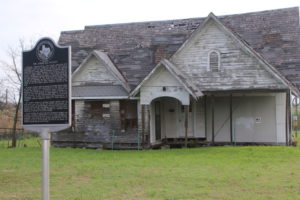 (Round Rock Patch) The Williamson County Commissioners Court last week approved an agreement to give $100,000 toward the restoration of a historic center in the city of Taylor.
(Round Rock Patch) The Williamson County Commissioners Court last week approved an agreement to give $100,000 toward the restoration of a historic center in the city of Taylor.
The earmark from the Williamson County Landfill Community Recreational Facility Fund will go toward the restoration of the Dickey Museum and Multipurpose Center in Taylor, work being headed by the Blackshear/O.L. Price Ex-Student Association of Taylor.
The museum is the former home of Dr. James Dickey, a pioneer in the areas of wellness, recreation, community and diversity among the African-American community in Taylor, Texas, in the mid-1900s. Dr. Dickey was named Man of the Year in 1952 by the Taylor Chamber of Commerce. The Dickey House, located at E. Fifth and Murphy streets, was approved for listing in the National Register of Historic Places in September 2016, officials said.
“The Dickey Museum and Multipurpose Center will provide information about African-Americans and the contributions they made to the city of Taylor and the United States,” officials said. “It also will serve as a resource to teach African-American history through interactive and engaging exhibits.”
The master site plan includes theater space, a meeting room, a wellness center, mediation area, play area, basketball courts, and a trail surrounding the museum that will connect to the city’s hike and bike trail, officials said. Parking will be available on properties adjacent to the house. The total cost of $508,000 for the project that had a groundbreaking January of last year.
The Williamson County Community Recreational Facility Fund provides funding for construction, improvement or remodel of community recreational facilities in Williamson County.
SWATH 2017 — Summer Workshop on African American Texas History
The fourth SWATH workshop, an interdisciplinary workshop for K-16 teachers and others interested in deepening their knowledge and appreciation of people of African descent in the Lone Star State, is set for July 6-8 in Houston. The title for this year’s event is, “Exploring American Indian, Jewish, and Asian Dimensions of African American Texas History.”
The workshop was founded by Texas Southern history professor Karen Kossie-Chernyshev, PhD.
SWATH is designed with life-long learners in mind, particularly those want to broaden and deepen their understanding of African American history and culture. SWATH emerged from a course syllabus on Modern African American History and grew into a vibrant three-day workshop offering face-to-face (and soon online) educational opportunities to teachers, students, community leaders, and others interested in African American Texas History. The aim has always been to make the workshops interdisciplinary and attentive to the African Diaspora. For more information and to register for the workshop, visit the SWATH site.
Day one of the workshop will be held at the Buffalo Soldiers Museum, 3839 Caroline, day two at the African American Library, 1300 Victor St., and day three at Texas Southern University, 3100 Cleburne.
Click images to enlarge:
TIPHC Bookshelf
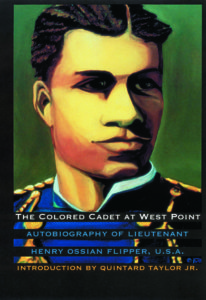 Published scholarship on black history in Texas is growing and we’d like to share with you some suggested readings, both current and past, from some of the preeminent history scholars in Texas and beyond. We invite you to take a look at our bookshelf page — including a featured selection — and check back as the list grows. A different selection will be featured each week. We welcome suggestions and reviews. This week, we offer, “The Colored Cadet at West Point: Autobiography of Lieutenant Henry Ossian Flipper, U. S. A.,” by Henry Ossian Flipper, with introduction by Quintard Taylor, Jr.
Published scholarship on black history in Texas is growing and we’d like to share with you some suggested readings, both current and past, from some of the preeminent history scholars in Texas and beyond. We invite you to take a look at our bookshelf page — including a featured selection — and check back as the list grows. A different selection will be featured each week. We welcome suggestions and reviews. This week, we offer, “The Colored Cadet at West Point: Autobiography of Lieutenant Henry Ossian Flipper, U. S. A.,” by Henry Ossian Flipper, with introduction by Quintard Taylor, Jr.
Henry Ossian Flipper was one of the nineteenth-century West’s most remarkable individuals. The first African American graduate of West Point, he served four years in the West as a cavalry officer but was court-martialed and dismissed from the service in 1882. He spent the rest of his long life attempting to clear his name.
Flipper’s record of accomplishment was significant for any individual in any time, and for a nineteenth-century black American it was phenomenal. As historian Quintard Taylor points out, in his post-Army career Flipper was a surveyor, cartographer, civil and mining engineer, interpreter, translator, historian, inventor, newspaper editor, special agent for the Justice Department, deputy U.S. mineral surveyor, aide to the Senate Committee on Foreign Relations, and consultant to the secretary of the interior. His work carried him to Mexico, Venezuela, and Spain, and he left a record of achievement that demonstrates his enormous talent and unrelenting effort.
The Colored Cadet at West Point contains Taylor’s biographical essay, Flipper’s account of his career at West Point, and a new index prepared for this volume.
This Week in Texas Black History, June 25-July 1
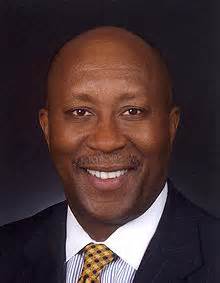 27 – Ronald “Ron” Kirk, the first black mayor of Dallas, was born on this day in 1954 in Austin. Kirk is the son of Willie Mae Kirk, a school teacher and civil rights activist, and Lee Andrew Kirk Sr., the first black postal clerk in Austin. Ron Kirk served two terms as Dallas mayor, 1995-2001. Prior to becoming mayor, he served as Texas Secretary of State (1994) under Gov. Ann Richards. Kirk graduated from Austin College in Sherman, and earned his law degree from the University of Texas. He served as U.S. Trade Representative from March 2009 until February 2013, and was the first African American to hold that Cabinet position as the president’s principal trade advisor, negotiator, and spokesperson on trade issues.
27 – Ronald “Ron” Kirk, the first black mayor of Dallas, was born on this day in 1954 in Austin. Kirk is the son of Willie Mae Kirk, a school teacher and civil rights activist, and Lee Andrew Kirk Sr., the first black postal clerk in Austin. Ron Kirk served two terms as Dallas mayor, 1995-2001. Prior to becoming mayor, he served as Texas Secretary of State (1994) under Gov. Ann Richards. Kirk graduated from Austin College in Sherman, and earned his law degree from the University of Texas. He served as U.S. Trade Representative from March 2009 until February 2013, and was the first African American to hold that Cabinet position as the president’s principal trade advisor, negotiator, and spokesperson on trade issues.
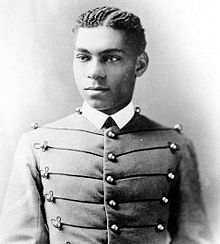 30 – Lt. Henry O. Flipper, first black graduate of West Point, was court martialed and dismissed from the Army on this day in 1882 for “conduct unbecoming an officer and a gentleman.” Flipper was an officer in the Tenth Cavalry serving at Fort Davis (Texas) when he was accused of embezzlement as commissary officer. Flipper maintained his innocence until his death (May 3, 1940) and waged a lifelong battle for reinstatement in the Army. In December 1976, when a bust of him was unveiled at West Point, the Department of the Army granted Flipper an honorable discharge, dated June 30, 1882. An annual West Point award in honor of Flipper is presented to the graduate who best exemplifies “the highest qualities of leadership, self-discipline, and perseverance in the face of unusual difficulties while a cadet.”
30 – Lt. Henry O. Flipper, first black graduate of West Point, was court martialed and dismissed from the Army on this day in 1882 for “conduct unbecoming an officer and a gentleman.” Flipper was an officer in the Tenth Cavalry serving at Fort Davis (Texas) when he was accused of embezzlement as commissary officer. Flipper maintained his innocence until his death (May 3, 1940) and waged a lifelong battle for reinstatement in the Army. In December 1976, when a bust of him was unveiled at West Point, the Department of the Army granted Flipper an honorable discharge, dated June 30, 1882. An annual West Point award in honor of Flipper is presented to the graduate who best exemplifies “the highest qualities of leadership, self-discipline, and perseverance in the face of unusual difficulties while a cadet.”
July
 1 – University of Houston and Olympic sprint and long jump star Carl Lewis was born on this date in 1961 in Birmingham, Alabama. Lewis graduated from Willingboro (N.J.) High School in 1979 and entered UH as the top-ranked high school track athlete in the country. He kept his top national ranking in the long jump and the 100-meter dash at the 1981 National Collegiate Athletic Association (NCAA) indoor championships and was the first athlete to win two events at an NCAA championship. As an Olympian, Lewis became the first African-American athlete since Jesse Owens in 1936 to win four gold medals in Olympic competition. Lewis won nine gold medals combined in the 100 and 200 meter sprints, the 4×100 meter relay, and the long jump, in four consecutive Olympics – 1984 Los Angeles, 1988 Seoul, 1992 Barcelona, and 1996 Atlanta. He won gold eight times in World Championships competitions. In December 2001, Lewis was elected to the National Track and Field Hall of Fame, was voted “Sportsman of the Century” by the International Olympic Committee, and “Olympian of the Century” by Sports Illustrated magazine.
1 – University of Houston and Olympic sprint and long jump star Carl Lewis was born on this date in 1961 in Birmingham, Alabama. Lewis graduated from Willingboro (N.J.) High School in 1979 and entered UH as the top-ranked high school track athlete in the country. He kept his top national ranking in the long jump and the 100-meter dash at the 1981 National Collegiate Athletic Association (NCAA) indoor championships and was the first athlete to win two events at an NCAA championship. As an Olympian, Lewis became the first African-American athlete since Jesse Owens in 1936 to win four gold medals in Olympic competition. Lewis won nine gold medals combined in the 100 and 200 meter sprints, the 4×100 meter relay, and the long jump, in four consecutive Olympics – 1984 Los Angeles, 1988 Seoul, 1992 Barcelona, and 1996 Atlanta. He won gold eight times in World Championships competitions. In December 2001, Lewis was elected to the National Track and Field Hall of Fame, was voted “Sportsman of the Century” by the International Olympic Committee, and “Olympian of the Century” by Sports Illustrated magazine.
1 – The Acres Homes Transit Company became the first African-American-owned bus franchise in the South on this day in 1959 when it received state certification. The predominantly black Acres Homes residents lived outside Houston’s city limits and nine miles northwest of downtown and had petitioned city hall for a permit to operate the franchise. The Yale Street Bus Line had ceased commuter service to the area the previous year. Four AHTC buses made 43 round trips a day between downtown Houston and Acres Homes, which was annexed to Houston in 1967.
Blog: Ron Goodwin, Ph.D., author, PVAMU history professor
 Ron Goodwin’s bi-weekly blog appears exclusively for TIPHC. Goodwin is a San Antonio native and Air Force veteran. Generally, his column addresses contemporary issues in the black community and how they relate to black history. He and the TIPHC staff welcome your comments.
Ron Goodwin’s bi-weekly blog appears exclusively for TIPHC. Goodwin is a San Antonio native and Air Force veteran. Generally, his column addresses contemporary issues in the black community and how they relate to black history. He and the TIPHC staff welcome your comments.
Read his latest entry, “Big People, Big Moments,” here.
Submissions Wanted
Historians, scholars, students, lend us your…writings. Help us produce the most comprehensive documentation ever undertaken for the African American experience in Texas. We encourage you to contribute items about people, places, events, issues, politics/legislation, sports, entertainment, religion, etc., as general entries or essays. Our documentation is wide-ranging and diverse, and you may research and write about the subject of your interest or, to start, please consult our list of suggested biographical entries and see submission guidelines. However, all topics must be approved by TIPHC editors before beginning your research/writing.
We welcome your questions or comments via email or telephone – mdhurd@pvamu.edu.

